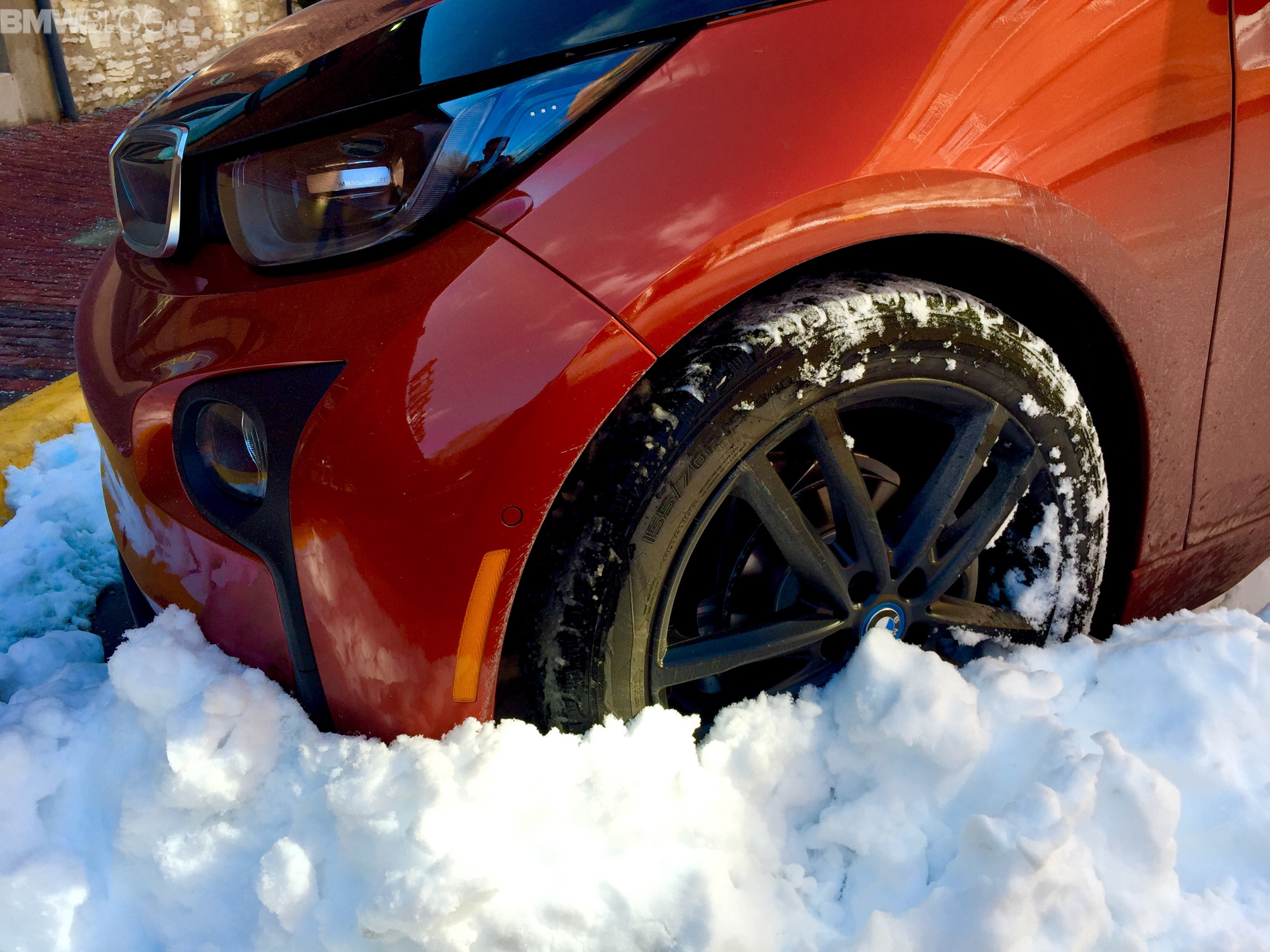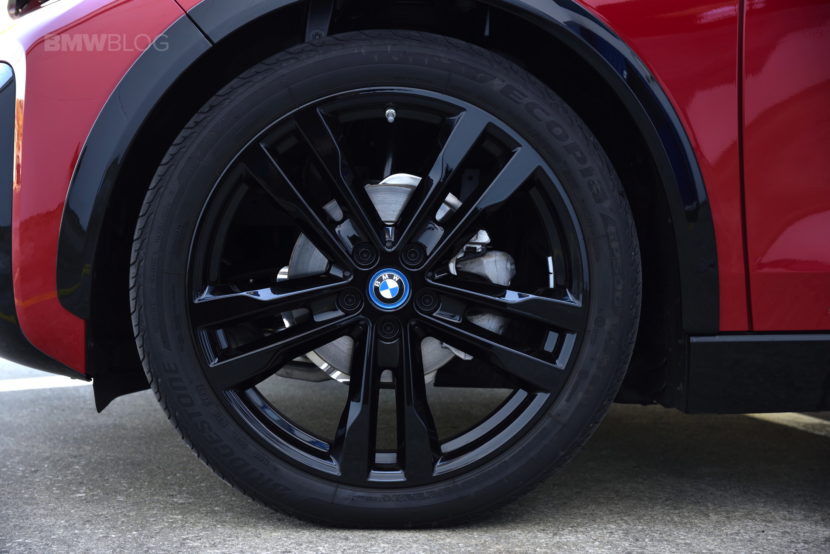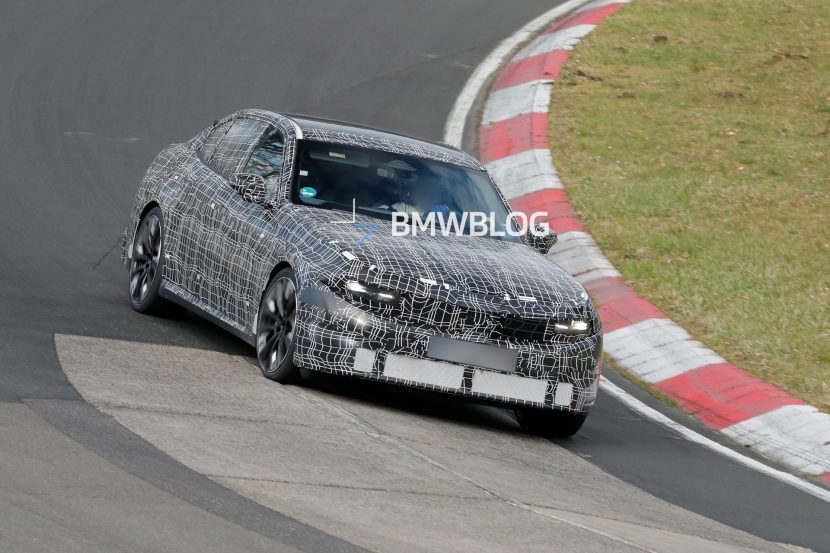This article first appeared on bmwi3blogspot. One of the more talked about features of the i3 is its tires. Not for decades has there been a car with such tall and narrow wheels and tires. Since the 70’s, the trend has been for tires to get wider and wider, and that is especially true for performance cars since more rubber on the ground generally means better roadholding.
Then came along the i3. It’s BMW’s quirky-looking mega-city car, and the first electric car from the brand. With all the incredibly unique aspects of this vehicle, it’s still the tires that catch most peoples attention when they first see it in person. They just aren’t used to seeing such tall and thin tires on a car, let alone a BMW. Actually, they look like they would be better suited for a motorcycle, but that’s just because we just aren’t accustomed to seeing tires like this. Rest assured the BMW engineers have done their homework, and the tires do exactly whet they were designed to. They provide excellent grip while increasing the cars efficiency with lower aerodynamic drag.
Bridgestone OEM Tires
BMW commissioned Bridgestone to make special tires just for the i3. Even though they carry the “Ecopia” name, they are different from any other tire that Bridgestone makes. Franco Annunziato, CEO and President of Bridgestone Europe said: “The BMW i3 is very much a car for the future. Developing a unique tire for this unique vehicle was therefore an enormously challenging but also rewarding experience. Energy efficiency is an important development criteria for all our tires at Bridgestone.
However, it becomes an even more critical factor in an electric car. Which is why we have put all our knowhow, skill and passion into developing this unique tire. One that we are confident delivers the premium performance, safety and economy towards consumers who have come to expect it from both brands.” As for performance, since BMW wanted to use a narrow tire for efficiency but not sacrifice on performance, they needed to use a much taller tire than most would expect on a car of this size.
By increasing the height, they were able to increase the contact patch so it is similar to the contact patch of a MINI Cooper, which is well known for it’s great handling. Talking about the i3’s tires and their grip on the road, Ulrich Krantz, BMW’s product manager for BMW i said: “It’s not rocket science. All that matters is the size of the contact patch. The 19-inch tires may be skinny, but their tall height generates the same contact patch as a low-section 16-inch MINI tire”.
So with the question of performance behind us let’s focus on the tire and wheel sizes and combinations. BMW doesn’t make it easy here. The standard wheel on the base Mega World interior is a BMW i Star Spoke (Style 427) wheel that is 19″ x 5″ on the front and rear and they use the 155/70 R19 84Q Bridgestone Ecopia EP600 all season tires that were specifically designed for the i3. Here is where is starts to get tricky.
If you get a BEV i3 with the standard Mega trim, the wheels and tires are the same size on the front & rear, but if you get any other interior trim (Giga or Tera Worlds) the rear wheels are slightly wider (19″ x 5.5″) and the tires are wider and lower profile (175/60 R19 86Q). Also, if you get the standard Mega World trim but get the range extender, you also get the wider wheels and tires on the rears. Then there are the optional 20″ Double Spoke sport wheels. They are also staggered in size and use Bridgestone Ecopia EP500 summer tires, not all-seasons. Up front you get 20″ x 5″ wheels and 155/60 R20 80Q tires and in the back there are 20″ x 5.5″ wheels and 175/55 R20 85Q tires.
So the wheel and tire size is staggered in every instance except for a base i3 with Mega World trim and no range extender, right? Kinda. Everything above applies for the standard 19″ Bridgestone Ecopia EP600 and 20″ Ecopia EP500 tires but not if you want/need winter tires. There will be two different winter tires available (Blizzak LM500 & Blizzak NV, though I’m not sure they will both be available in the US). However they will only be available in 155/70 R19, so if you want the winter tires you’ll be using the same size front and rear tire. Furthermore, if you order your i3 with the optional 20″ Sport wheels ($1,300 option) and you live in an area that would necessitate winter tires, then you’ll need to buy a set of 19″ wheels also, since there are no 20″ winter tires that will fit the 20″ sport wheels.
I have spoken to BMW product managers about this and was told bluntly that the 20″ tires are summer tires, not all-seasons and they will not perform well in snow and ice. So if you were considering the 20″ sport wheels for your i3 and you live in a cold weather area, understand you’ll likely need to spend another $2,000 or so to get a set of winter tires & wheels, since you can’t just buy the tires. If you have any of the three 19″ wheels then all you need to do is buy the winter tires and you can swap them for the winter and put your Ecopia EP600’s back on in the spring.
One more thing. None of the tires are runflats, and the i3 does not have a spare tire. What you do get is a can of “Fix-a-Flat” tire sealant and compressed air, which if used properly should get you at least as far as your nearest BMW dealer which will likely be the only place that stocks there rare tire sizes. Finally, if you are wondering how well the i3 does in the snow, below are a couple videos that were just posted on YouTube by a new i3 owner in Norway. I have also talked with a couple people that have driven the i3 in the snow and they have remarked about how well it has done, likely another benefit of the tall, thin tires.
Someone asked me if there are snow chains available for the winter tires and yes, they are available as an accessory from BMW.







































































